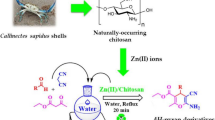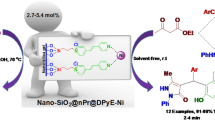Summary
¶Crystals of natron, Na2CO3·10H2O, were grown by slow evaporation of a saturated sodium carbonate solution at room temperature. A single-crystal fragment was measured on a CCD X-ray four-circle diffractometer at 110, 270 and 295 K. Whereas the crystal structure of natron at room temperature had first been published in 1969 with R = 18%, in the present investigation the non-centrosymmetric structure was solved by direct methods and refined subsequently to R1 = 1.9% (110 K), 2.5% (270 K), and 3.5% (295 K). In contrast to the previous structure description, even the hydrogen atoms were located and refined with isotropic displacement parameters. Space group is Cc, lattice parameters are a = 12.740(1)/12.763(1)/12.750(2) Å, b = 8.816(1)/8.955(1)/9.001(2) Å, c = 12.571(1)/12.593(1)/12.590(2) Å, β = 115.97(1)/115.89(1)/115.83(1)° at 110/270/295 K.
The structure is composed of pairs of edge-sharing Na(H2O)6 octahedra forming Na2(H2O)10 units, and CO3 molecules. These units are connected by hydrogen bonds (d O⋯O > 2.73 Å) in a NaCl-like arrangement. The structure is pseudo-centric, only the carbonate groups and four H atoms violating a centric symmetry.
The CO3 molecules are perfectly ordered at 110 K and show almost isotropic ADPs of the carbonate O atoms. The CO3 position is constrained by hydrogen bonds, involving at least three H bonds per acceptor oxygen atom. At 270/295 K the carbonate groups still hold the former low-temperature position to 60/46%, whereas 40/54% are disordered into at least two different positions with large and strongly smeared anisotropic displacement parameters of the carbonate O atoms. However, a centrosymmetric equivalent of the low-temperature CO3 position is occupied to only ∼ 10%.
A definite phase transition from ordered to partially disordered CO3 groups was neither observed in differential scanning calorimetry, nor in temperature-dependent birefringence, IR and Raman spectroscopic measurements, as the process takes place over a wide temperature interval and without any change of the space group symmetry Cc.
Similar content being viewed by others
Author information
Authors and Affiliations
Additional information
Received February 18, 2002; accepted April 22, 2002
Rights and permissions
About this article
Cite this article
Libowitzky, E., Giester, G. Washing soda (natron), Na2CO3·10H2O, revised: crystal structures at low and ambient temperatures. Mineralogy and Petrology 77, 177–195 (2003). https://doi.org/10.1007/s00710-002-0215-2
Issue Date:
DOI: https://doi.org/10.1007/s00710-002-0215-2




